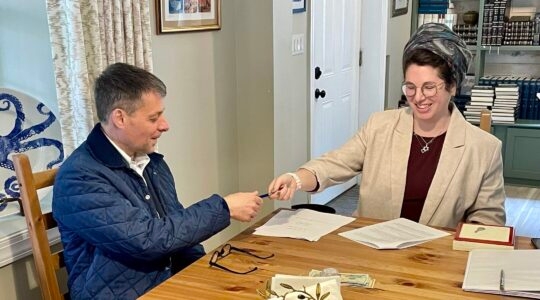Deborah Feldman’s book, “Unorthodox: The Scandalous Rejection of My Hasidic Roots,” has garnered significant media attention since its publication. Recently, much of the focus has centered on whether some of Feldman’s claims are true or false. Unfortunately, this debate is eclipsing a far more important conversation that we, the readers in general and the Jewish community in particular, should be having in response to this book.
This conversation has to do with the struggles that people like Feldman face when they opt out of the chasidic lifestyle. For some reason, people either seem to romanticize the chasidic community — as the keepers of Judaism and having beautiful and supportive families — or to belittle it — seeing them as extremists who evade social responsibility and have more children than they can support. These black-and-white views obscure the nuances inherent in what it means to be both inside the community and to leave it in order to find a place in a world Feldman — and I — were taught to shun.
Like Feldman, I also chose to leave the Satmar community in order to pursue an education and a life of my choosing. The secular education I received while attending Satmar Yeshiva was minimal and, by all measures, inadequate. After my bar mitzvah all secular education was discontinued, so the gap in my math, reading, and writing skills — already behind those of my secular peers — only widened. At age 16 I went on to study at the Slabodka Yeshiva in Bnai Barak, Israel, for two years. In 2008, I returned to the United States hoping to enroll in college.
The choice to leave yeshiva and the community I grew up in was difficult, both emotionally and practically. Yet, my desire to live a life of individuality and openness drove me to pursue my goals despite the rejection from my friends and community. The social and emotional pressures were only part of that struggle. Practically, going from Satmar to SAT prep was far from simple. Without a high school diploma, I would need to get a GED, but, if you are under the age of 19, you need to provide a discharge letter from the last school you attended. This was something my yeshiva was not going to help me with.
Luckily, I found Footsteps, an organization that assists people seeking to find their way in the secular world. Footsteps guided me on how to take the GED. Afterwards, they provided enough tutoring in math and writing that I did not need to take remedial courses in college. Footsteps also generously granted me a scholarship — something that most institutions refuse to someone who cannot report a high school GPA. This made it possible for me to attend Stony Brook University, where I am now completing my junior year in biochemistry and theater arts. I intend to pursue a Ph.D. in medical research.
It’s only recently, as my reading skills have improved and my horizons have broadened, that I learned the correct word to describe the transitional world I experienced between yeshiva and now. It was Kafkaesque. A world whose instruction manual everyone but you received; a world where getting to where everyone else is requires running twice as fast and enormous support.
Some of the particulars of my story are different than Feldman’s. Unlike Feldman, I left my community before I was set up in an arranged marriage and unlike Feldman I had some family support. But like Feldman, and like so many others I have met through Footsteps, I experienced the unique ups and downs of trying to adapt to the secular world with little familiarity, preparation, or support.
I met Feldman almost a year ago; she told me about her book deal with Simon & Schuster and the publicity campaign her publishers had planned for her. It was my hope back then that perhaps a book with national publicity would trigger a conversation about the unique struggles that ex-haredi people face.
But the story of how Deborah Feldman flew from her nest appears to be going the way of Icarus. With the wings of publicity tightly affixed to her more salacious anecdotes and claims, she seems to be flying too close to the sun. I hate to think that doubts about her story, which despite its journalistic flaws has many important insights, will blind the Jewish world to the real story of struggle, pain, displacement, and even redemption that characterizes life as an ex-haredi.
We can use Feldman’s tale as the basis for the same old debate about how we, as modern Jews, feel about chasidim. Or, we can use this opportunity to have a more important discussion: What does the culture of ultra-Orthodoxy mean for those who choose to leave it behind, what are the challenges they face, and what can their fellow Jews do to help them.
Samuel Katz is a junior at Stony Brook University.
The New York Jewish Week brings you the stories behind the headlines, keeping you connected to Jewish life in New York. Help sustain the reporting you trust by donating today.




